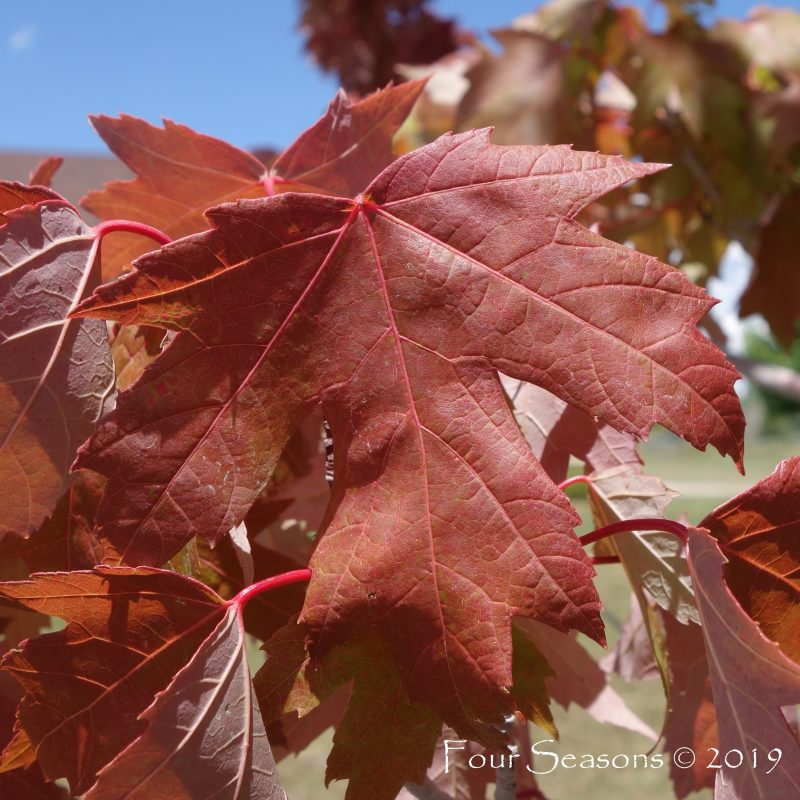One of the maple trees in my yard is looking like fall has arrived because it is already turning to red. Since I know it’s way too early for that to happen naturally, that appearance is usually caused by a condition called iron chlorosis and it’s easily treated.
Autumn Blaze and Hot Wings Maples seem to be affected most often and although it usually affects maples, it can also affect some other trees as well. It’s caused by high pH in your soil which in turn causes an iron deficiency. If the pH is above about 7.5-7.7, the iron gets tied up chemically and is not available to the plant, even though there still could be iron present in the soil. The higher the pH, the worse the condition gets.
It starts as interveinal chlorosis which is when the area on the leaves between the veins begin to turn yellow or red. As it progresses, necrosis sets in and the leaves will actually turn black if not treated. This will stunt the plant even if it’s well fertilized, so if you’ve been following a fertilizer schedule, but you are seeing some of these signs, then this is probably what’s going on with your tree. Left unchecked, it can eventually kill your tree.
The good news is that this iron deficiency is easily treated using several products, or a combination of them. Of course the thing you are trying to do is to bring the pH down in your soil and this can be done easily by adding iron sulfate. Iron sulfate is of course sulfur which, when combined with water, turns into a weak sulfuric acid solution. This helps to pull the pH down which in turn allows more iron to be available for the plant. Treat the affected tree every 4-6 months for best results. A word of caution however- be careful not to get it on your concrete or other surfaces because it will discolor them.
Another product that is helpful is Iron Plus. This is basically the same product as the iron sulfate, but adds some nitrogen for green growth which is especially beneficial during the summer months. Iron Plus is a powder that you apply a couple of times during the growing season- usually in March and July.
Chelated iron is my third product in the fight against iron chlorosis. It comes in liquid form and can be used as either a spray or a drench and each application method serves different purposes. If you use it as a spray, apply it several times during the growing season to turn the leaves green quickly producing a “feel good” fix for the discoloration. Yet even though it will improve the appearance of your tree, it won’t fix the problem in the soil when used alone. It adds iron to the plant, but it won’t lower the pH of your soil, so it needs to be used in conjunction with the iron sulfate for a long term solution to address the soil problem. If you choose to use it as a drench, apply once a year.
If you have noticed these symptoms on your trees, please don’t let them go untreated. Chemistry lesson aside, this is one instance where the solution is quite easy and the addition of a little iron can go a long way to improving the health and appearance of the trees in your yard.

